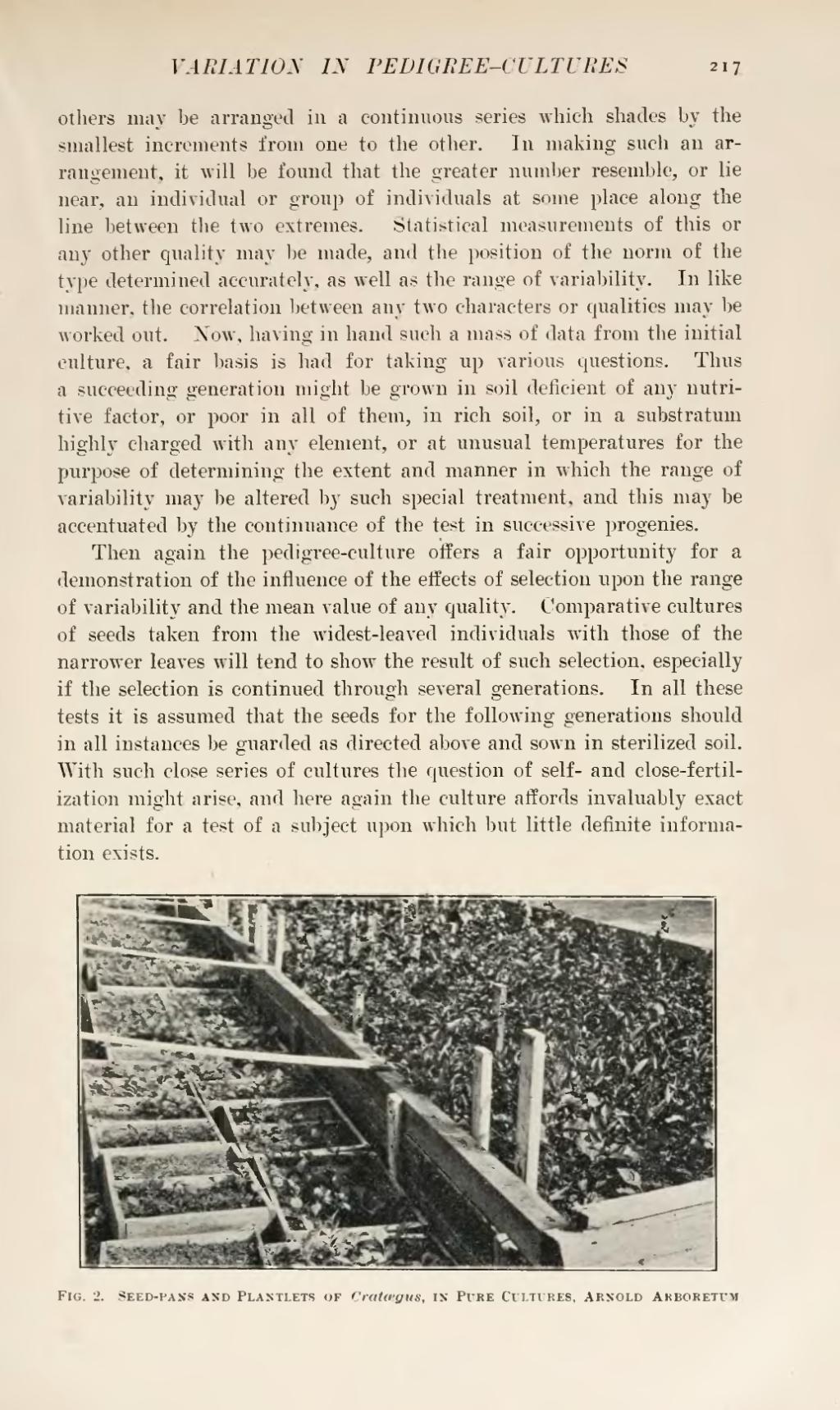others may be arranged in a continuous series which shades by the smallest increments from one to the other. In making such an arrangement, it will be found that the greater number resemble, or lie near, an individual or group of individuals at some place along the line between the two extremes. Statistical measurements of this or any other quality may be made, and the position of the norm of the type determined accurately, as well as the range of variability. In like manner, the correlation between any two characters or qualities may be worked out. Now, having in hand such a mass of data from the initial culture, a fair basis is had for taking up various questions. Thus a succeeding generation might be grown in soil deficient of any nutritive factor, or poor in all of them, in rich soil, or in a substratum highly charged with any element, or at unusual temperatures for the purpose of determining the extent and manner in which the range of variability may be altered by such special treatment, and this may be accentuated by the continuance of the test in successive progenies.
Then again the pedigree-culture offers a fair opportunity for a demonstration of the influence of the effects of selection upon the range of variability and the mean value of any quality. Comparative cultures of seeds taken from the widest-leaved individuals with those of the narrower leaves will tend to show the result of such selection, especially if the selection is continued through several generations. In all these tests it is assumed that the seeds for the following generations should in all instances be guarded as directed above and sown in sterilized soil. With such close series of cultures the question of self-and close-fertilization might arise, and here again the culture affords invaluably exact material for a test of a subject upon which but little definite information exists.

